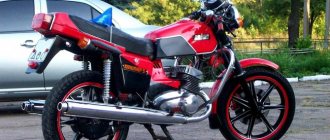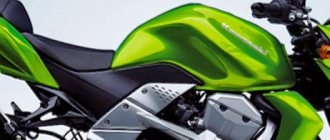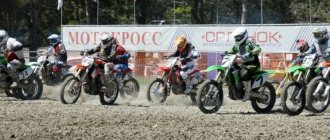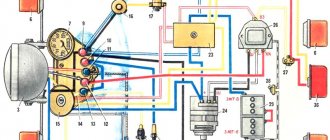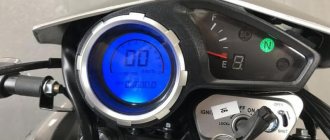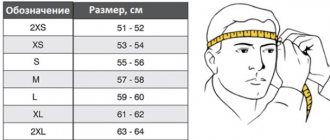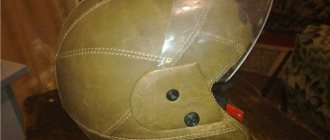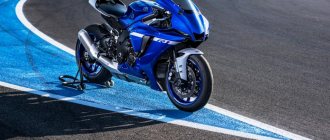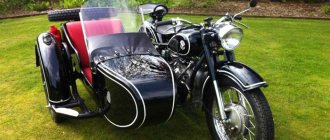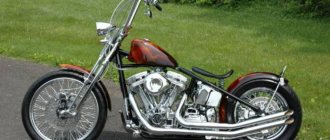The Irbit Motorcycle Plant is the only plant in Russia engaged in the production of heavy motorcycles and one of the few plants in the world specializing in the production of side-trailer equipment. Perhaps today there is no person who is interested in motorcycle technology who does not know Ural motorcycles. This technique went through a long and thorny path before it became known on different continents.
Today, residents of Belgium, Germany, Italy, the USA, and Canada drive the Urals; motorcycles are supplied to the countries of North Africa and Southeast Asia by order of the Ministry of Defense. If earlier the old Ural could be found in almost every village yard, then in 2021 such equipment is considered almost exclusive. Only 3% of the total number of motorcycles produced by IMZ remain on the CIS market, while the rest are sent to non-CIS countries. In this article we will talk about the history of the plant, its formation and the current state of affairs.
The history of the creation of the IMZ and the Ural motorcycle
Back in the 30s of the last century, at a meeting of the People's Commissariat of Defense of the USSR, the question of choosing a model for the Armed Forces was urgently raised. The army needed a heavy motorcycle with a sidecar. Several pieces of equipment, including foreign ones, were offered to choose from. They decided to take the brainchild of the German concern – the BMW R-71 – as the basis for the future development. It was decided to purchase five copies of the model in Sweden for the purpose of security and secrecy.
Two copies of the equipment were handed over to the MMZ (Moscow Motorcycle Plant, which was created on the basis of a bicycle plant), one was given to technologists so that they could disassemble the chemical composition of the parts. Soviet specialists studied the depth and nature of surface treatment, the cleanliness and precision of manufacturing parts, after which a design bureau for heavy mechanical engineering was created.
This is how the Ural M-72 motorcycle appeared, mass production of which began in 1941. Due to the difficult situation at the front, MMZ were forced to evacuate to the city of Irbit. Later, the plant, located on the territory of the brewery, became known as the Irbitsky Motorcycle Plant. Fyodor Lomanov became the head of the plant at the new location, and the technical side of production was managed by the chief designer Serdyukov. The motorcycles were assembled under difficult conditions: some workshops were forced to be located at the Irbit trailer plant, which is three kilometers from the main production area.
This resulted in certain problems with production speed and assembly quality. There was a month when representatives of the military department did not accept a single motorcycle. However, over time, the difficulties were gradually resolved. In addition, they were able to modernize it and improve it already during the war: they installed a double-disc clutch, a double-support stroller wheel axle, and reinforced wheel spokes. A lightweight half-track tractor was also manufactured with a motorcycle front fork and an experimental overhead valve boxer engine.
Irbit Motorcycle Plant
Many with whom I spoke about this trip to the small Ural town of Irbit were surprised that Ural motorcycles were still alive, assembled and sold. Somehow this brand has sunk into oblivion in recent years. I completely forgot. But he is alive, generally even healthy and is selling well, and to the West. I walked around the assembly shop and found out how everything was going there.
Let's start with the facade. It is difficult to recognize the once giant factory in this gray building. Stella with a motorcycle is difficult to see from the road due to the neglected park. There are no signs. Most of the building, which was once a factory headquarters, is leased out for shops, shops, and cafes. The pink doors in the background are a passage through which almost no one passes. The Ural motorcycle manufacturing plant employs just over a hundred people. For comparison, in the Soviet years there were 10,000 workers.
Strictly speaking, it would be more correct to call these motorcycles Ural than “Ural”. Because most of their components are imported. Motorcycle connoisseurs will probably shake their heads a lot when they see the list of brands that supply components to Irbit. Marzocchi telescopic forks, Sachs shock absorbers, Denso alternator, Yuasa battery, Ducati ignition, SKF bearings, Herzog gears, NAK cuffs, Brembo disc brakes, electronic fuel injection based on Bosch and Delphi components. In general, complete mincemeat by motorcycle standards.
From our Soviet here: pipes for the frame, castings for the engine and sheets for the sidecar.
The Ural motorcycle is in many ways the best and only one in the world. Let's bend our fingers: the only all-season motorcycle that is not afraid of frost.
The only production motorcycle with a sidecar
The only all-wheel drive motorcycle. Yes, this also happens. If you climb into something impassable, you can hard-wire the wheel on the stroller. In this mode, the motorcycle can only go straight, but it will get you out of any mess.
The guys from the plant said that they regularly go out on motorcycles into forests and mountains, got to the Dyatlov Pass, and the Ural highway goes smoothly at 110 km/h.
The machines at the plant are mostly Soviet, but there are also new ones, for example this laser cutter.
Mostly women work in the painting shop. The men work welding, cutting and assembling. One worker can service 10 machines. The work is leisurely, because the norm is 5 motorcycles a day. In Soviet times, there were two workers at each machine; they worked in two shifts. The company produced 10,000 units of equipment per year.
Work at the factory is valued. 25,000 rubles are not lying on the road in Irbit.
The company produces about 1,000 motorcycles per year. 99% are exported. They work on an advance payment basis. Dealers collect orders - after a few weeks, the buyer receives his Ural. In Russia, they are bought by rich people who are overcome by nostalgia. In the West there are fans of harsh military and lovers of getting into the wilds. In terms of cross-country ability, the Ural is unrivaled. Enduro, motorcycle crossovers and similar equipment cannot compete with anything. Only an ATV or buggy can give a fight.
In Russia, "Ural" can be bought only in three places. In the US there is a dealer in almost every state, some have two. Motorcycles undergo rigorous testing every year in the US and Europe to meet environmental and safety regulations. “Ural” passes all tests.
By and large, there are only two Ural models. They differ only in appearance. One is retro, the other is more modern. The design is all identical. But there are more than 60 coloring options.
The assembly is slipway, which ensures high quality.
The assembly shop surprised me with its thoughtfulness. Everything is on shelves and boxes. Everything is clear.
This is where the clutch is assembled.
And this will soon be a motor.
The construction is many years old. And by and large, the modern Ural is just a deeply modernized version of the prototype BMW motorcycle of the 40s. But I’ll tell you about the story in another post.
The skeleton is overgrown with intestines.
These are the Brembo brakes. Those who are in the know will understand)))
Even on export versions, “Ural” is written in Russian.
Powder painting is also the most fashionable.
For Russians, such a motorcycle will cost about 500,000 rubles.
Each motorcycle is tested and run-in at a special stand.
“Ural” can give a lot of reasons for skepticism: expensive, archaic, there is nothing Russian in it anymore.
But there is also reason for positivity. The plant, albeit in this form, was preserved, the brand is alive. And most importantly, it is in demand, dictated not by fashion, but by pragmatics. “Ural” is an uncompromising rogue, and can carry a load of up to 150 kilos (according to the passport, in reality it is more). An excellent choice for the travel lover. “Ural”, in addition to charisma, also has consumer properties, which is why people buy it.
But the feeling is still ambivalent. Although the enterprise is alive and somehow developing. In comparison with what happened in the Soviet years, everything looks somewhat depressing. But you can reassure yourself that Ural has switched from producing a mass product to an exclusive one.
Irbit Motorcycle Plant on the map:
Booking.com Book now!
Your ad could be here!
https://nashural.ru Your advertisement will be seen by thousands of people a day
Interesting? Tell your friends!
Post-war time
In total, during the war the plant manufactured and produced slightly less than 10 thousand copies of the Ural M-72. In 1947, IMZ management developed a plan for the further development of the plant. The task was a large-scale reconstruction of production workshops, reaching the level of 20 thousand units of equipment per year, which was 4 times more than the previous level. Construction of new buildings began, and the territory of the plant gradually expanded. The tool shop, which was in particularly dire straits, acquired its own building, which also housed a mechanical repair shop. By the end of the first post-war five-year plan, IMZ received the necessary space for production workshops.
Already in 1953, motorcycles began to be assembled for export. In addition to the production of two-wheeled vehicles for the needs of the army and police, the Urals were collected and exported to other states of Eastern Europe. The plant’s “golden time” was in the mid-70s and early 80s, when equipment was sent to France, Spain, Sweden, Latin America - Colombia, Argentina and other countries. This continued until the 90s, and after the collapse of the socialist camp and the USSR, the list of states where the Urals were sold was greatly reduced. A difficult time began, and although this period was not without losses, IMZ was able to survive.
Motorcycle Ural Gear-Up
At the moment, this is one of the most expensive Ural models of 2015, its price is 648,000 rubles. The basis for creating the motorcycle was the Tourist model, but among the improvements the following were made:
- new roll bars;
- drive to the sidecar wheel (all-wheel drive motorcycle);
- new color options: Forest Camouflage, Desert Camouflage and Forest Fog;
- new lights and cases appeared.
In appearance, the new product shows its power and desire to conquer even the most difficult road. As a result, the manufacturer was able to create a motorcycle that has good cross-country ability, 19-inch wheels, a large trunk, high ground clearance and the latest imported electrical equipment. The result can be seen in the photo.
A crisis
Since the 90s of the last century, the plant went bankrupt several times, the number of workers was constantly reduced and production volume fell. The name of the plant also changed several times. For example, in 1992, IMZ was corporatized, changing its name to OJSC Uralmoto. But all this did not save us from a protracted crisis and a certain fall to the bottom. So in 1997, the same number of motorcycles were produced in Ibrit as at the height of World War II, when the equipment was assembled in very difficult conditions - only 4 thousand copies. This led to a large debt: motorcycles were sold for 67 million rubles, and the debt was 5 times more. The crisis peaked in 2000. The plant in Irbit completely went bankrupt, because of IMZ's debt, the lights and heating were turned off, and the workers were unable to assemble a single motorcycle.
At that time, the enterprise belonged to shareholder Kakha Bendukidze; disappointed with the purchase, he put IMZ up for sale. Top managers Dmitry Lebedinsky, Ilya Khait and Vadim Tryapichkin became interested in purchasing the industrial giant. There are literally 140 people left in the company - specialists under the age of 50, some of them have been behind the machines for decades, and even in difficult times they did not give up their favorite business - assembling motorcycles. In 2003 alone, the new owners invested about 12 million rubles in the plant in the development of investment programs and in the construction of new buildings. So, three years later, 1,755 copies of the Ural were assembled in Irbit. The new owners wanted domestic equipment to be able to compete with imported ones, in particular with American ones. Therefore, the main emphasis was placed on high quality and exclusivity for the purpose of further export.
Technical characteristics of motorcycles Ural 2015
It is worth noting that all 7 models have quite a lot in common; each of them contains:
- powerful 750cc boxer engine;
- constant air cooling;
- 4-speed gearbox with the ability to drive in reverse.
Even as children, we had to remember the same boxer engine of Ural motorcycles, which produced excellent speed data. Now the manufacturer has decided to modify the motorcycle, increasing its volume and power. Having bought a new model, you will not only be satisfied with the purchase, but also forget for a long time about the main defects and frequent breakdowns of the old Urals. The new models have received improvements, so that now oil will not leak from the engine.
The new Ural 2015, photos of which will be below, are especially popular today in the United States. Such equipment is valued there, although in Russia it is losing demand due to the high price for consumers. In 2015 and beyond, IMZ motorcycles are mostly supplied to the USA.
Six of the seven 2015 models retained the standard stroller, only the Retro Solo did not receive one. All new products, without exception, now have the ability to engage reverse gear, and the Patrol and Gear Up models now have all-wheel drive. Urals have always been spoken about positively in terms of cross-country ability, because the motorcycle could get out of any difficult situation. With the new all-wheel drive, 2 models can overcome these barriers even better with the push of just 1 lever. As mentioned above, motorcycles are of different types, for example, the “Retro Solo” model does not have a sidecar, which makes it great for traveling and driving around the city.
Of course, the new products have one big drawback that repels customers - the high price. On average, 2015 models are asking from 500 to 700 thousand rubles, and most people buy Japanese fast bikes. But still, some fans of Soviet classics will buy them and feel nostalgic when riding Ural road motorcycles. Let's take a quick look at some of the new Ural motorcycles 2015, photos and their characteristics.
